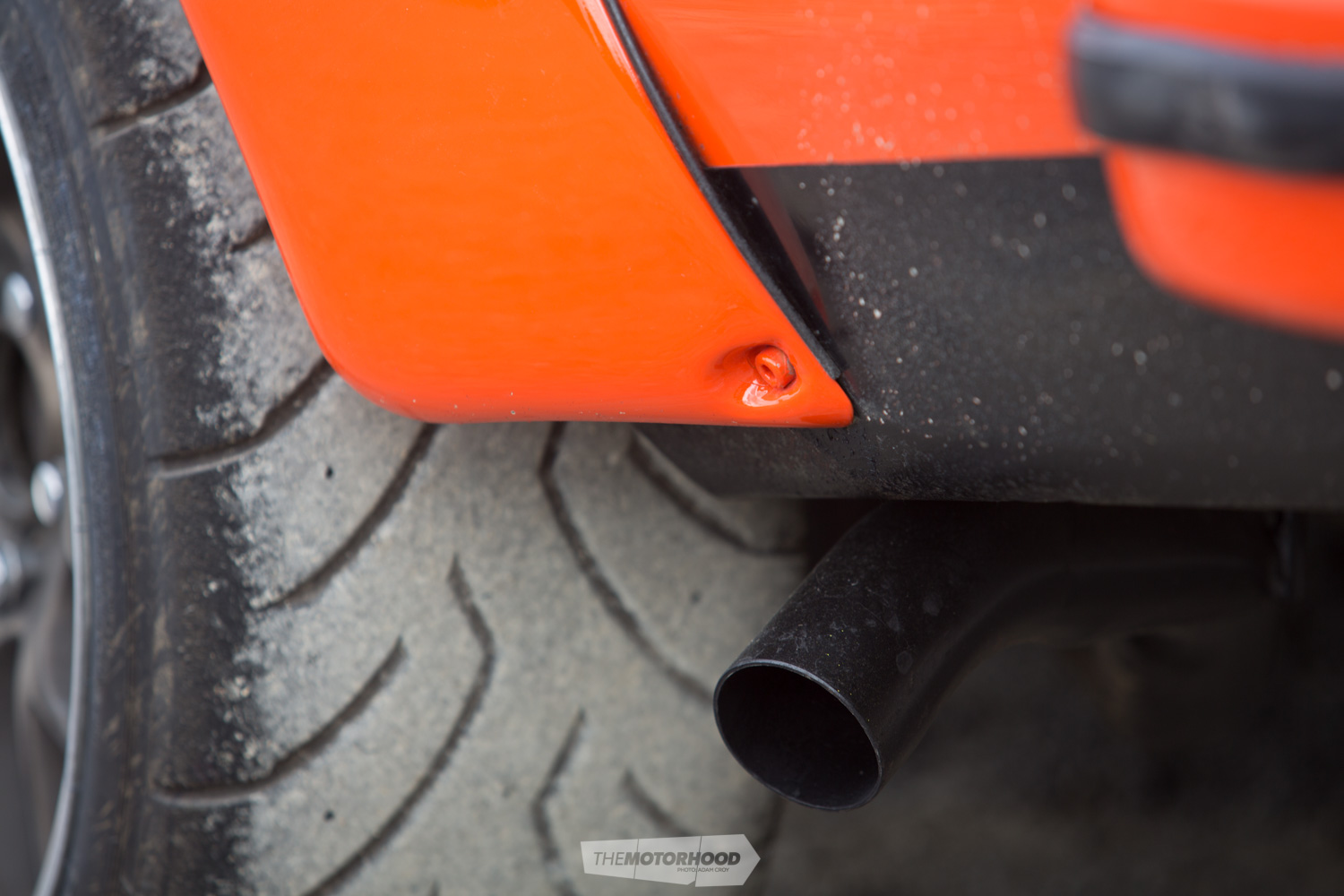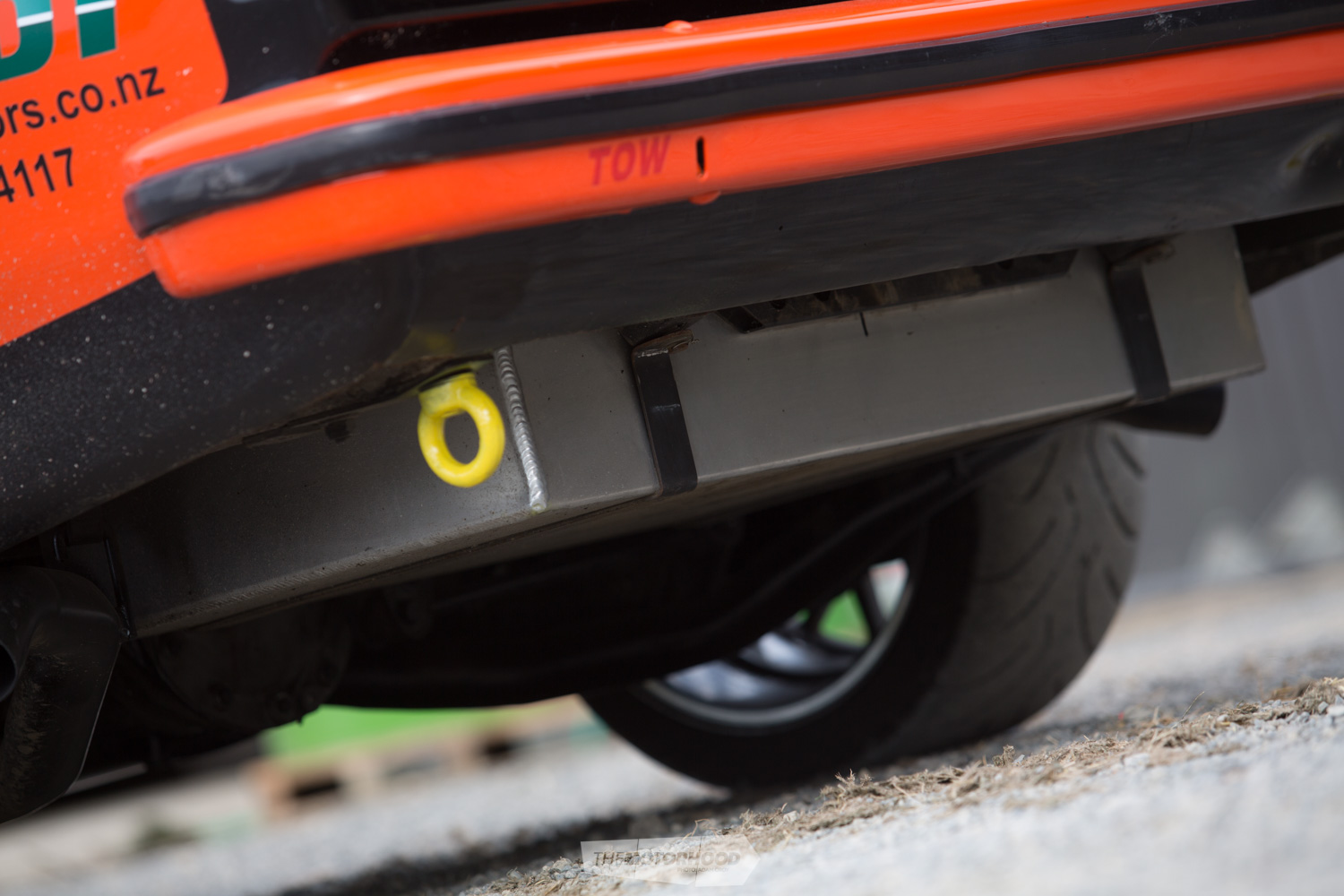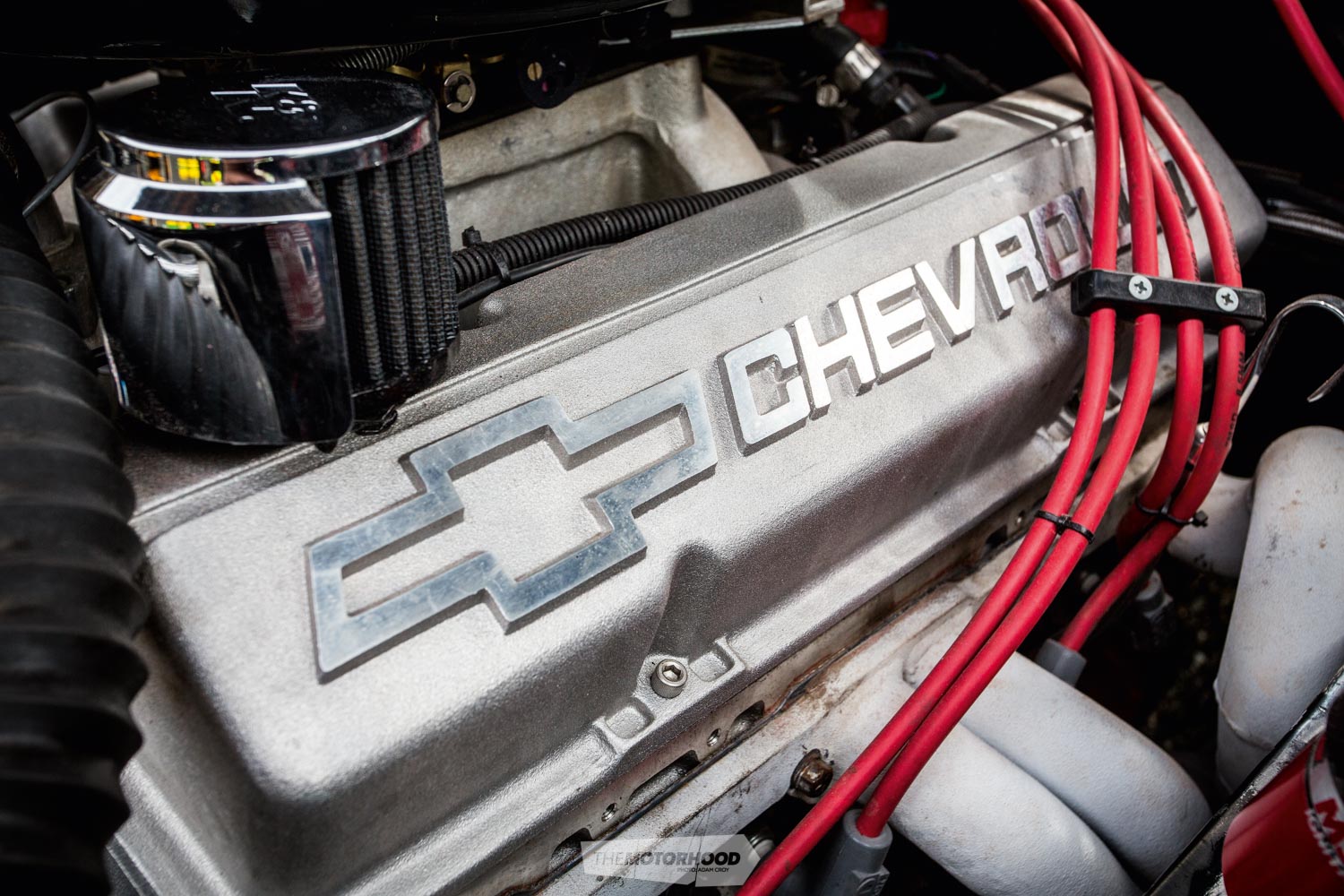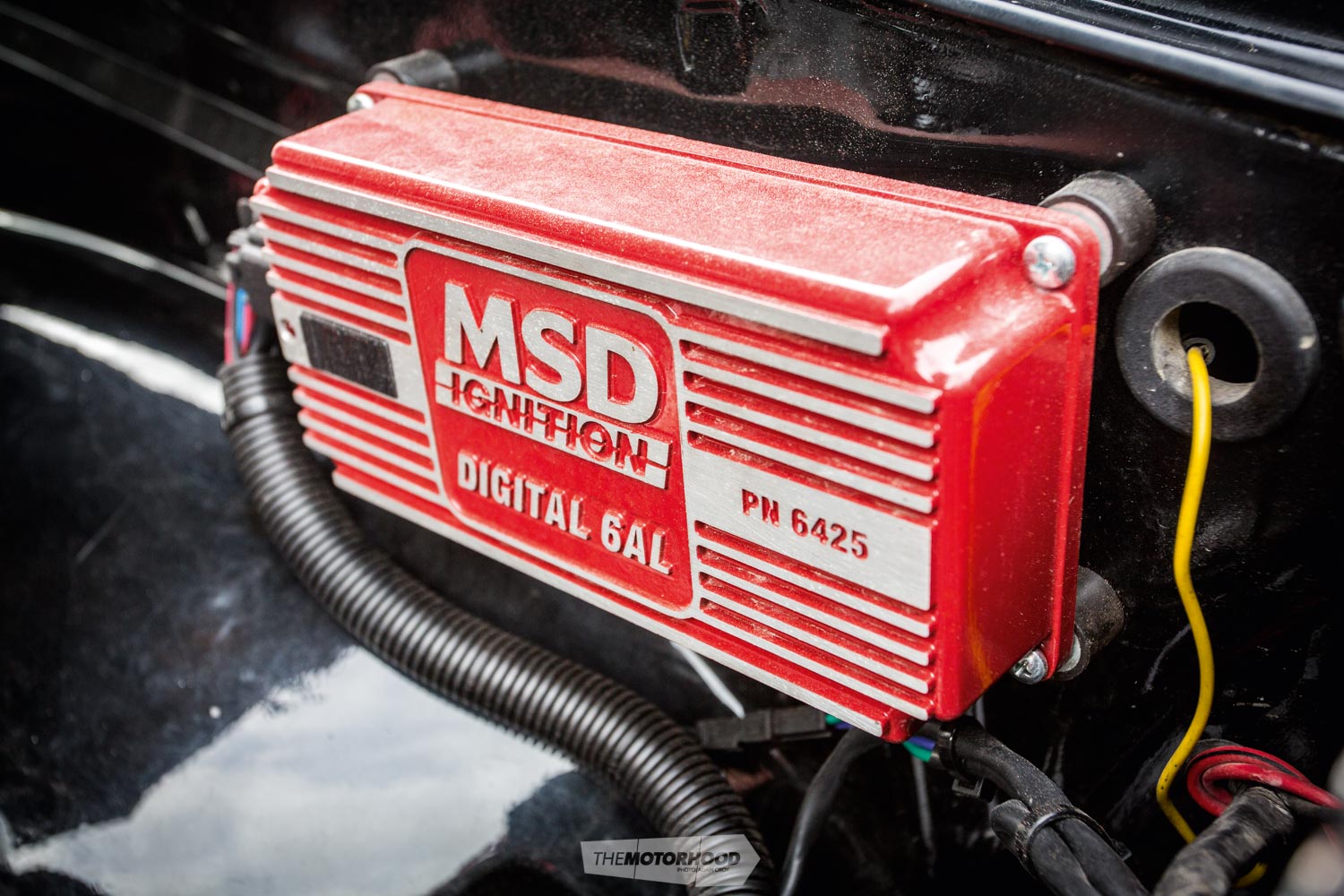Following our orange theme for this month’s Targa New Zealand issue, we decided to head south to the small Manawatu town of Marton, home of Targa’s infamous ‘Cop Corner’, to check out Craig Pilet’s beautifully prepared, Chevy-powered ’77 Holden Torana

It was watching Targa at ‘Cop’s Corner’ with his wife Janine and family a couple of years ago that sparked the Pilet family’s interest in the event. They arrived just in time to witness Mike Lowe’s now famous attempt to cross the bridge on two wheels before gravity finally got the better of his Fiat Abarth, the car ending up on its roof. But, as we know, all was not lost. Mike Lowe being the competitive character we’ve all come to enjoy and admire, he quickly jumped out with his long-time co-driver, Phillip Sutton, and pushed the car back onto its wheels with the help of a few willing spectators, and they were soon back on the road with just a few minor scars to show for their unceremonious cornering tactics.
At that time, Janine immediately turned to Craig and said, “How cute, they look so cool.” With tongue in cheek, Craig replied, “Shall we buy a car, dear?” Much to his surprise, Janine expressed the view that Targa might be something they could do together.
Now, I don’t know about you, but if my wife gave me the nod to purchase a Targa car I certainly wouldn’t be waiting around for her to change her mind, nor would I be asking her twice — and nor did Craig. He wasted no time in purchasing this 1977 Holden LX Torana hatchback, and took it home. The first thing Janine said was, “What the hell’s that thing?” Craig answered by saying, “Well, you said we could do the Targa.” Janine’s immediate response was, “Yeah, but I didn’t think you’d actually go through with it!”
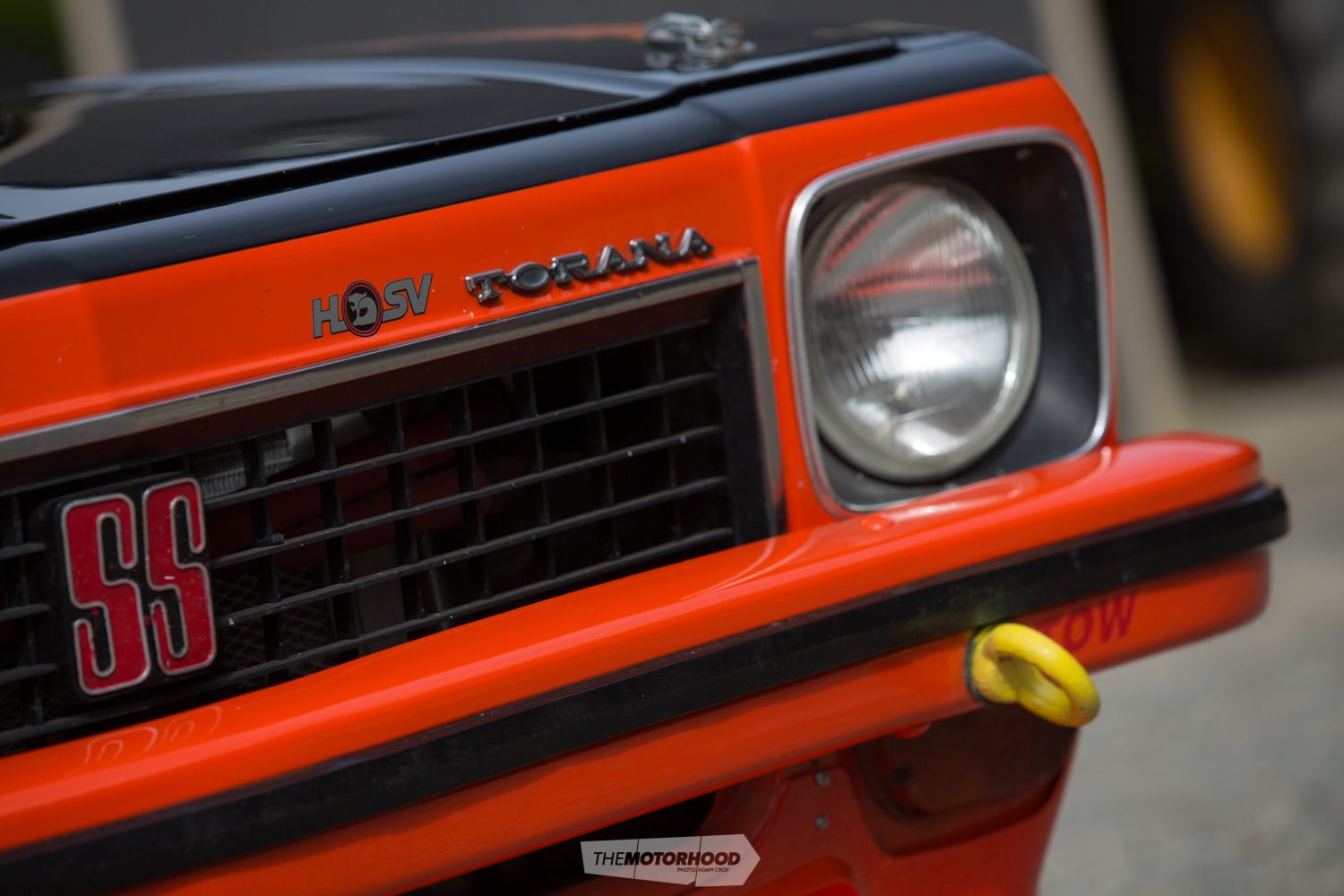
From Back-burner to Targa
Craig has always had an interest in motor sport. However, due to the time restrictions caused by running a very successful contracting business, and other of life’s more important priorities, the possibility of entering into any form of motor sport seemed to have been well and truly relegated to the back-burner — until that fateful day at Cop’s Corner.
Craig’s always liked the shape and style of the Torana, and that is what attracted him to the car initially. This particular LX model is basically a facelifted version of Holden’s previous LH Torana, the updated range including one addition to the line-up — a tasteful new three-door hatchback.
The new LX Torana hatchback was available as an SL or SS, boasting fairly much the same mechanicals as the previous model in the form of a 3.3-litre in-line six-cylinder or 5.0-litre V8. Exterior and interior trim changes to the LX Torana included repositioned badges, whilst SS models received a front spoiler courtesy of the SL/R 5000, a sportier stripe package, black bonnet treatment, sports wheel covers and a centre console.
When Craig purchased his Torana, it had already been built as a track car. But despite the roll cage and all the equipment necessary to transform this track beast into a competitive Targa machine, the task ahead would indeed be a massive undertaking, as Craig was to find out.
Although he doesn’t know too much of the Torana’s previous history before it was turned into a race car, it was always painted orange as far as he understands, and he added some blackout treatment just to break up the colour a little. He then continued to improve upon the original car over the last three years and three Targa events, slowly but surely progressing the Torana’s performance, handling and, most importantly, its reliability.
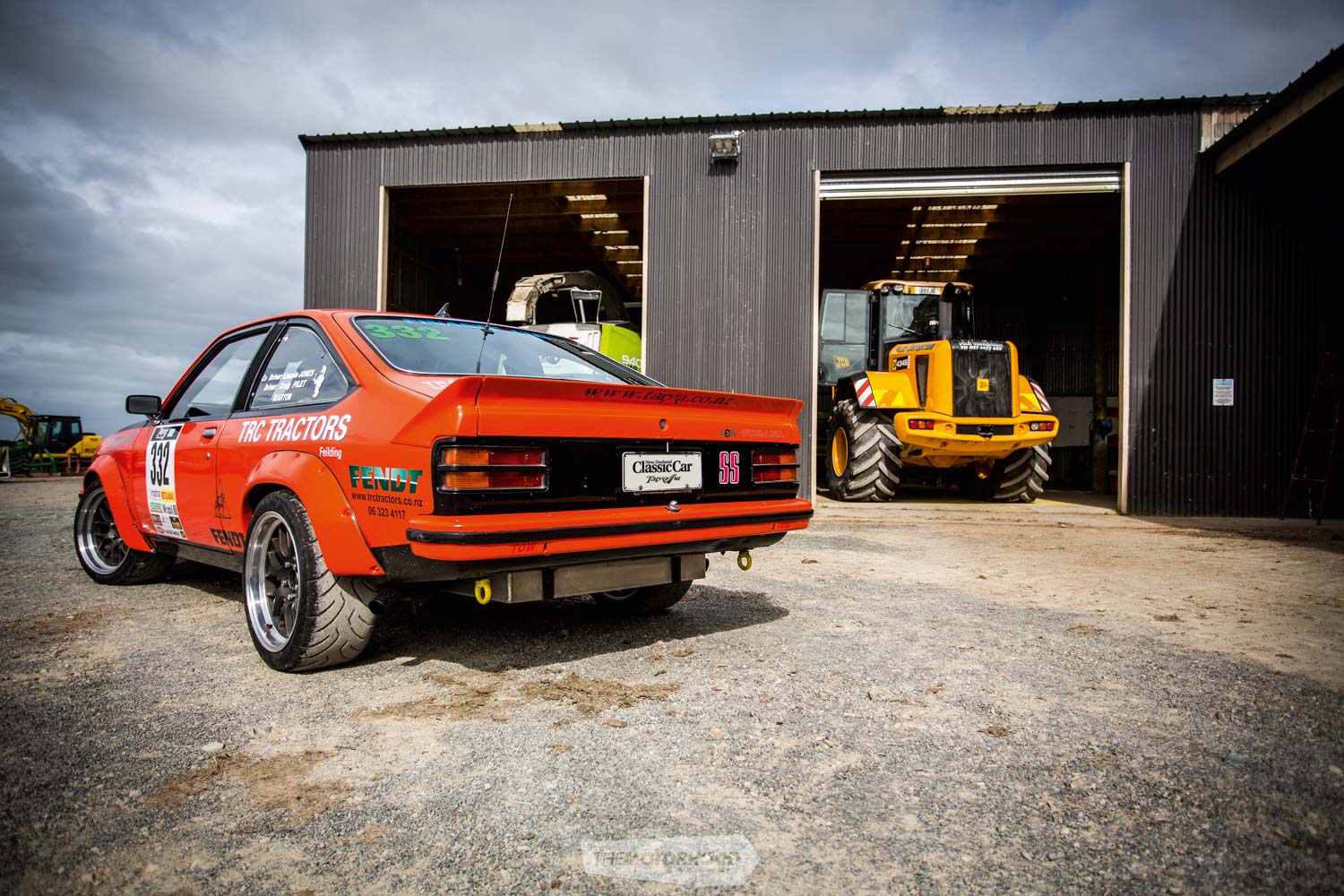
Spreading the development costs over three years not only relieved some of the financial pains associated with refining such a car to suit the rigorous tortures of Targa racing, but also provided a chance for Craig to learn more about his car and the Targa event itself, given the fact that he’d never attempted anything like this before.
When he brought the car home initially, groundwork for his first Targa event in 2010 basically consisted of a full check of the brake system and fitting the appropriate tyres, and that was about the extent of his preparation. Craig was delighted to cross the finish line in Wellington after five intense days of racing. However, there was one particular incident only three stages from the end that nearly prevented the orange beast from arriving into Wellington.
Little did Craig or his crew know, but the car’s alternator had decided to pack up, flattening the battery. Ordinarily this isn’t an issue in the short term, however, the electrically-operated cooling fan ceased to function at appropriate engine temperatures, causing the engine to overheat. Unfortunately, as luck would have it this incident occurred right on the start line of a special stage, causing the contents of the radiator to blow out all over the road. Craig immediately shut the engine down and waited for it to cool sufficiently, before refilling the radiator with water provided by spectators who donated the contents of their water bottles. This enabled him to get started again. Once the car was up and running the natural airflow over the engine was sufficient to keep it cool enough to complete the stage and the event, although there were a few tense moments travelling through Wellington’s myriad stop lights on their way to the finish line.

Craig’s always liked the shape and style of the Torana, and that is what attracted him to the car initially
Further Development
After completing the 2010 Targa New Zealand, Craig took the Torana to Bruce Chisholm in Wanganui (who now keeps the car race prepared and attends to repairs and maintenance) for an assessment and appraisal of any work necessary for future events.
Bruce, who crews for Garth McGregor — Holden XU-1 Torana — took one look at the car and asked Craig how on earth had he managed to drive this thing from Auckland to Wellington. He subsequently presented Craig with a fairly comprehensive list of work he felt needed attending to in order to make the Torana drive and handle better than it did. Craig certainly wasn’t prepared for the financial cost of attending to every item on the list in one hit, he felt the car actually didn’t handle too badly, and elected to spread the work required over a couple of years.
The first thing they decided to attend to was the front suspension and brakes, which were completely rebuilt, with the rear-end Watt’s linkage attended to the following year. Craig admits the suspension rebuild and brakes have made a real difference to the overall performance of the car, whilst retaining the original Holden differential, which Craig reckons is the only original Holden part left.
The 350ci (5.7-litre) Chevrolet V8 engine that was in the car when Craig bought it had become very tired, was fuming quite badly and needed attention. A new 5.7-litre engine was sourced and fitted. Craig wanted the car to remain as simple as possible and chose to keep the engine reasonably stock, with the exception of AFR (Air Flow Research) CNC cylinder heads plus a competition cam and valvetrain, and the decision to run a Braswell four-barrel carburettor set-up and a set of custom exhaust headers.

Coleman Marine & Performance Ltd, from Marton, undertook all the engine work. This extra boost of power required a new gearbox, so a Tremec five-speed unit was fitted in keeping with Craig’s strength, performance and reliability philosophy.
The idea behind keeping things as simple as possible, without going to extremes, was so that during Targa special stages and scheduled service stops the engine could be easily attended to without a requirement for specialist maintenance equipment. Having said that, Craig admits they have had their fair share of issues during the last two Targa events, but thanks to the dedication and commitment of his crew, who are focused on getting the car across the finish line, the team has been able to finish every Targa New Zealand entered so far.

Torana Times: First Generation
The HA Vauxhall Viva made its first appearance as an Australian-assembled car in 1964. Its replacement, the first Torana, was essentially an HB Viva warmed over with a mild restyle and a lot of local parts. GM Holden even managed something that Vauxhall hadn’t been able to accomplish — a four-door model. Interestingly, four-door CKD kits were manufactured for shipping to the UK and, oddly enough, some of those kits returned down under when Vauxhall shipped them to New Zealand! The hot HB was, of course, the Brabham Torana.
HB Production (1967–’69) 36,561
Torana Times: Second Generation
The first of the second-generation Toranas — the LC — featured more aggressive styling, including a longer nose and longer wheelbase. The LC was also the first Torana fitted with a six-cylinder engine, while the LJ GTR XU–1 was triumphant at Bathurst, Peter Brock recording his first ‘great race’ win at the 1972 Hardie-Ferodo 500. The TA, basically a facelifted entry-level model, came with either a 1.3- or 1.76-litre four-cylinder engine.
LC Production (1969–’72) 74,627
LJ Production (1972–’74) 81,813
TA Production (1974–’75) 11,304


Torana Times: Third Generation
With the LH, Holden upsized the Torana, now available in four-door form only. Buyers could choose between the usual four- and six-cylinder engines or a newly added option — a V8. The LH Torana would score back-to-back victories at Bathurst in 1975 (Peter Brock) and 1976 (Bob Morris). The LX model became the first Australian car to feature a hatchback, while a new performance version became available in 1977 — the A9X — and the driving team of Peter Brock and Jim Richards took out the 1978 and 1979 Hardie-Ferodo 1000 in an A9X. The Torana finished with the UC – the four-cylinder UC Sunbird becoming a popular family car in New Zealand.
LH Production (1974–’75) 70,184
LX Production (1975–’78) 65,977
UC Production (1978– ’80) 53,008
Jealous Pride
Craig admits that basically everything that can go wrong has gone wrong, especially during their very first Targa. Braking was also somewhat of a battle, despite the Wilwood high-performance system, as these big, heavy cars certainly rely heavily on brakes in an event like this. Craig was somewhat curious as to why he wasn’t wearing out any brake pads during last year’s Targa, and subsequent investigation discovered that the brake pads used were too hard, causing the rotors to wear and not the pads. This issue has since been remedied with a new set of rotors and softer compound pads.
Another niggling issue that hounded Craig and his team during last year’s Targa from day one was repeated carburettor flooding. Their natural response was to continually adjust the carburettor to control the amount of fuel flow throughout the entire event, which proved to be a fairly frustrating task as they battled to keep the Chevy V8 running at optimum power. Unfortunately, halfway through the Gentle Annie special stage the Torana stopped completely, and had to be brought out on a trailer, which was the first and only stage Craig has failed to complete thus far.
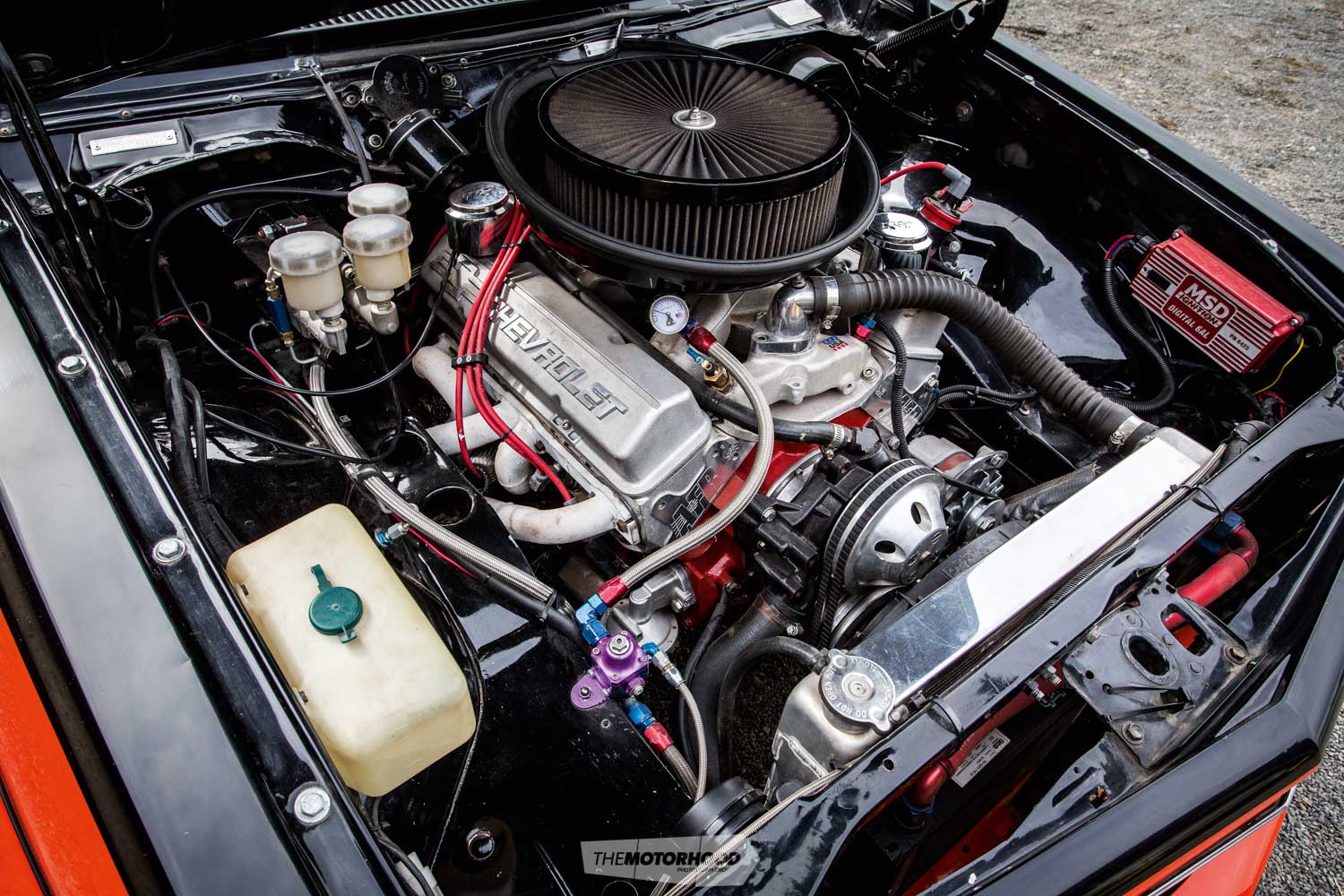
Craig wanted the car to remain as simple as possible and chose to keep the engine reasonably stock
The driver of the recovery vehicle asked Craig where he wanted to go, and he requested that he be taken into Pro Parts in Napier, hoping it would have the parts necessary to get the car running again. It was Craig’s lucky day, as the driver just so happened to be the owner of Pro Parts, and was only too happy to oblige with a new ignition system, which was installed that night. During this year, in preparation for Targa New Zealand 2013, Craig has had the carburettor retuned by Braswell and the car on a dyno for final tuning by Steve Hildred in New Plymouth. The brakes have been rechecked and all fluids changed and, according to Craig, “We’re ready to go!”
Craig and Janine are no doubt eager to improve on their achievements during previous Targa events — and that includes a second in class two years running and a third in class one year. The team has also won the coveted ‘Jealous Pride’ trophy, awarded for the best-presented classic car. Craig admits, “Yes, we’re a little green, but we are learning as we go!” Sentiments shared by many Targa competitors, we’re sure. In our view it’s this positive attitude, tenacity, and camaraderie that keep these classic cars competing day after day, making Targa so exciting and such a great spectacle. Mind you, it’s hard work, as most will attest. Night after night, Targa’s parc fermé is usually littered with literally every kind of automotive repair gadget imaginable — including some interesting home-made devices — trolley jacks and rays of light emanating from lead lights casting scary shadows from underneath cars, as crews work tirelessly into the wee small hours to ensure their vehicles make the start line the following day.
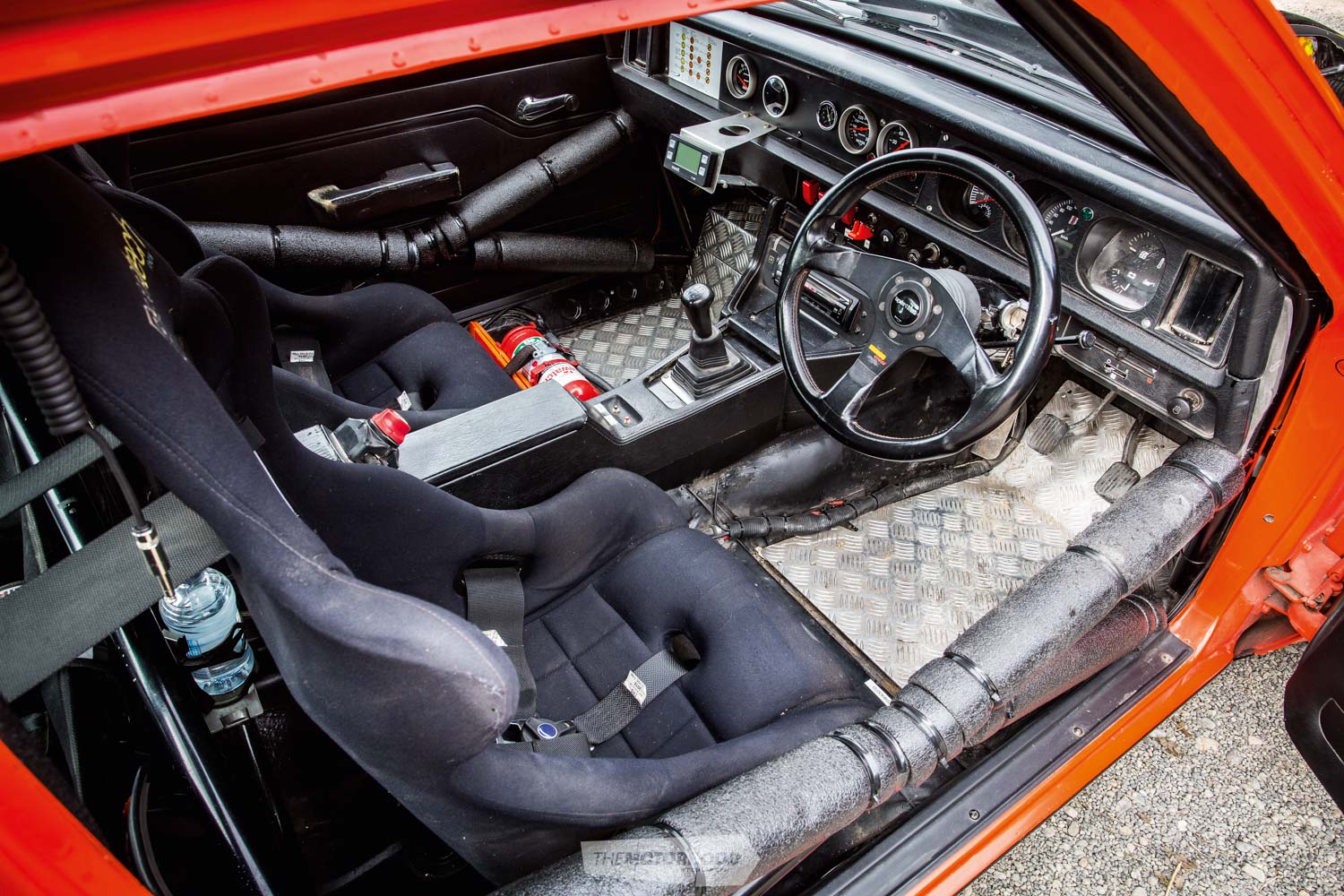
That, folks, is what commitment is all about — and it’s a required quality for any team wanting to achieve success on Targa New Zealand.
Craig would like to specially thank his wife, Janine Pilet (co-driver for the team’s first two Targa events), Lincoln Jones (Craig’s current co-driver), Kesty Manning and Richard Murray.



